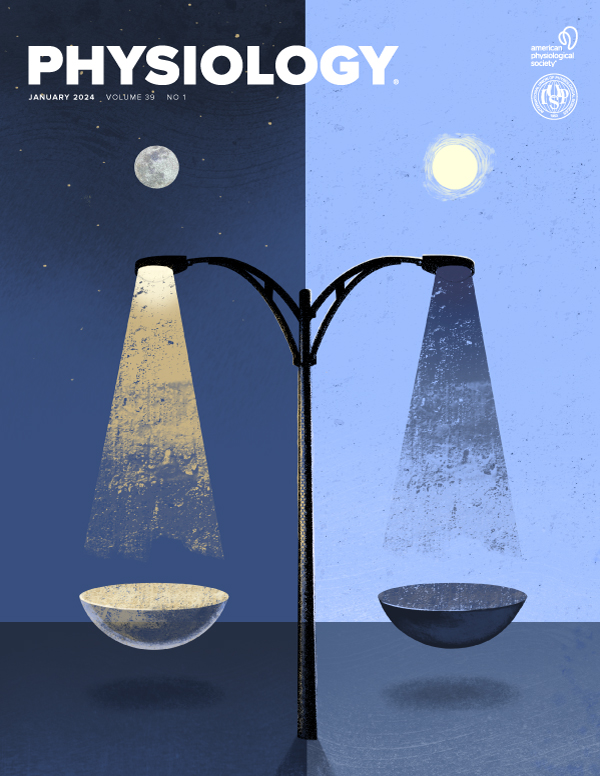Sex-specific and immune-cell-specific contributions of beta2 integrins in myocardial ischemia-reperfusion injury
IF 10.3
2区 医学
Q1 PHYSIOLOGY
引用次数: 0
Abstract
Leukocyte recruitment and their mediated inflammatory responses are critical for cardiovascular diseases, including myocardial ischemia-reperfusion (I/R) injury, which accounts for 9% mortality and 10% morbidity rates in ischemic heart disease patients. Blocking leukocyte recruitment in mouse knockouts (KO) of beta2 integrin (CD18) or blocking beta2 integrin with anitibodies in multiple animals significantly reduced infarct size after myocardial I/R injury. However, the cell-specific contribution of leukocyte beta2 integrin to I/R injury is unknown. In this study, we used the newly established CD18flox/flox (hITGB2 KI) mouse strain to address this knowledge gap. We crossed them to CSF1R-cre (CD115) and MRP8-cre (S100A8) and tested the KO of beta2 integrins in different leukocyte populations. Interestingly, CSF1R-cre CD18flox/flox unexpectedly deleted beta2 integrins in all peripheral blood leukocyte populations, including blood neutrophils, monocytes, CD4 T cells, CD8 T cells, B cells, and NK cells. It also elevated the cell number of these leukocyte populations in peripheral blood. In MRP8-cre CD18flox/flox mice, beta2 integrins were only knocked out in neutrophils but not other peripheral blood leukocytes. And only neutrophil number was elevated in peripheral blood. After 35 minutes of myocardial ischemia and 24 hours of reperfusion, we found both CSF1R-cre CD18flox/flox and MRP8-cre CD18flox/flox mice have significantly reduced infarct size compared to cre- controls. However, if we distinguish the sex in analysis, we only found a significant alleviation in female but not male CSF1R-cre CD18flox/flox mice. In contrast, we observed a significant alleviation only in male but not female MRP8-cre CD18flox/flox mice. These results suggested sex-specific and immune-cell-specific contributions of beta2 integrins in myocardial ischemia-reperfusion injury and provided new insights into beta2 integrin targeting therapies. This research was supported by grants from the National Institutes of Health, National Heart, Lung, and Blood Institute, USA (R01HL145454, R41HL156322, and R44HL152710) and a startup fund from UConn Health. This is the full abstract presented at the American Physiology Summit 2023 meeting and is only available in HTML format. There are no additional versions or additional content available for this abstract. Physiology was not involved in the peer review process.β 2整合素在心肌缺血再灌注损伤中的性别特异性和免疫细胞特异性作用
白细胞募集及其介导的炎症反应对心血管疾病至关重要,包括心肌缺血再灌注(I/R)损伤,缺血性心脏病患者死亡率为9%,发病率为10%。阻断小鼠敲除β 2整合素(CD18)的白细胞募集或在多种动物中用抗体阻断β 2整合素可显著减少心肌I/R损伤后的梗死面积。然而,白细胞β 2整合素对I/R损伤的细胞特异性贡献尚不清楚。在本研究中,我们使用新建立的CD18flox/flox (hITGB2 KI)小鼠品系来解决这一知识空白。我们将它们与CSF1R-cre (CD115)和MRP8-cre (S100A8)杂交,并测试了β 2整合素在不同白细胞群体中的KO。有趣的是,CSF1R-cre CD18flox/flox意外地在所有外周血白细胞群中删除了β 2整合素,包括血液中性粒细胞、单核细胞、CD4 T细胞、CD8 T细胞、B细胞和NK细胞。它还增加了外周血中这些白细胞群的细胞数量。在MRP8-cre CD18flox/flox小鼠中,β 2整合素仅在中性粒细胞中被敲除,而在其他外周血白细胞中未被敲除。外周血中仅中性粒细胞数量升高。在心肌缺血35分钟和再灌注24小时后,我们发现CSF1R-cre CD18flox/flox和MRP8-cre CD18flox/flox小鼠与cre-对照相比,梗死面积明显减小。然而,如果我们在分析中区分性别,我们只发现雌性CSF1R-cre CD18flox/flox小鼠明显减轻,而雄性CSF1R-cre CD18flox/flox小鼠没有。相比之下,我们观察到只有雄性而不是雌性MRP8-cre CD18flox/flox小鼠显著减轻。这些结果提示了β 2整合素在心肌缺血-再灌注损伤中的性别特异性和免疫细胞特异性作用,并为β 2整合素靶向治疗提供了新的见解。本研究得到了美国国立卫生研究院、国家心肺血液研究所(R01HL145454、R41HL156322和R44HL152710)和康涅狄格大学健康中心的启动基金的资助。这是在2023年美国生理学峰会上发表的完整摘要,仅以HTML格式提供。此摘要没有附加版本或附加内容。生理学没有参与同行评议过程。
本文章由计算机程序翻译,如有差异,请以英文原文为准。
求助全文
约1分钟内获得全文
求助全文
来源期刊

Physiology
医学-生理学
CiteScore
14.50
自引率
0.00%
发文量
37
期刊介绍:
Physiology journal features meticulously crafted review articles penned by esteemed leaders in their respective fields. These articles undergo rigorous peer review and showcase the forefront of cutting-edge advances across various domains of physiology. Our Editorial Board, comprised of distinguished leaders in the broad spectrum of physiology, convenes annually to deliberate and recommend pioneering topics for review articles, as well as select the most suitable scientists to author these articles. Join us in exploring the forefront of physiological research and innovation.
 求助内容:
求助内容: 应助结果提醒方式:
应助结果提醒方式:


